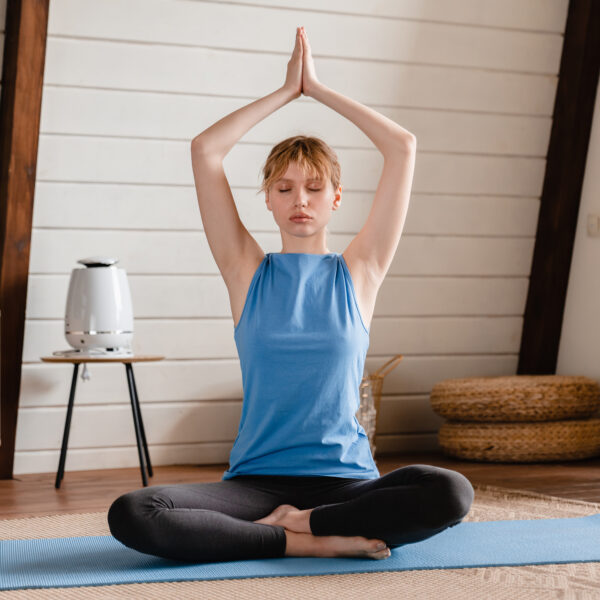Choosing the proper journaling techniques depends on your lifestyle and how you like to express yourself. Some people are more comfortable with artistic expression, while others need different means and methods. Do you know how you tell yourself best? If not, try a few of these methods until something feels right to you. You know it’s right when you feel comforted, relaxed, and joyful after completing your daily journaling or looking at your past journals.
Seven Journaling Techniques
1. Lists
 A great way to start journaling is to list things on your mind. This can be a list of things you need to do, things you’re grateful for, things that are stressing you out, or anything else on your mind. Getting these thoughts down on paper can help you to organize your thoughts and get a better handle on what’s going on in your life.
A great way to start journaling is to list things on your mind. This can be a list of things you need to do, things you’re grateful for, things that are stressing you out, or anything else on your mind. Getting these thoughts down on paper can help you to organize your thoughts and get a better handle on what’s going on in your life.
Journaling is an excellent practice for relieving stress and documenting your thoughts, feelings, and life events. One easy and enjoyable way to begin journaling is to start your own “Things On My Mind” list. This could include anything preoccupying you or your recent musings–for example, a funny conversation you had yesterday, the lovely morning you spent walking with your Cavalier King Charles Spaniel, or an exciting project you’ve been working on.
Committing these things to paper can be cathartic and informative; it helps open paths of thoughtful self-reflection while sparking future ideas. Whatever the items that make a list, jotting them down is the perfect first step in beginning a successful journaling journey.
2. Morning Pages
Morning pages are one of the journaling techniques and are a great way to start your day with mindfulness and introspection. The concept was made famous by author Julia Cameron, who used journaling as an essential part of her creative process.
Focusing on self-reflection through carefully chosen words helps to clear the mind and create an awareness of our reactions to life’s events. You don’t have to be a writer or artist to benefit from this practice; anyone can gain insight into their thoughts and feelings by engaging in morning pages. So why not challenge yourself and commit to taking some time each morning – whether it’s a few minutes or longer – to discover how your thoughts express themselves through writing?
The idea is to write three pages of stream-of-consciousness writing first thing in the morning. This helps you get your thoughts and feelings out on paper so you can start your day with a clean slate.
3. Bullet Journaling

Bullet journaling is one type of effective journaling techniques that uses short, concise sentences or bullet points to capture thoughts and ideas. This method allows you to track your thoughts and ideas without getting bogged down in too much detail.
Bullet journaling is one of the best ways to stay organized and provide yourself with a creative outlet. Not limited to checklists and planners, bullet journaling allows you to brainstorm any ideas you can imagine! You can track sleep patterns, habits, goals – whatever your heart desires. Whether it’s drawing, sketching, doodling, or writing, there are endless possibilities for its use.
Set reminders for yourself so that you never forget your plans – buying groceries or cleaning out your closet. Using lots of colors in your journal makes it enjoyable instead of just a chore. With bullet journaling, you make a system wholly tailored around yourself and, by doing so, come one step closer to achieving a more mindful lifestyle.
4. Gratitude Journaling
Another one of the great journaling techniques is to focus on gratitude. Every day, write down a few things that you’re grateful for. This lets you shift your focus to the positive things in your life and is a fabulous and joy-filled way to start your day on a positive note.
Gratitude journaling is a great practice that can transform your outlook on life. Writing down what you are thankful for can be a powerful mood booster and help you remember the good times in life, even when things don’t seem so great. Writing down your blessings regularly can help you gain perspective and reframe situations in a more positive light. Give gratitude journaling a try – you might find that it can make all the difference in how this year unfolds.
5. Prompt Journaling
If you’re struggling to come up with things to write about, prompt journaling can be a great solution. A popular method is to choose a word or phrase and then write about it for five minutes. The prompt helps you get your creative juices flowing and gives you a great starting point for your journaling session.
Journaling is an excellent way to release emotions, express creativity, and gain clarity. If you’re stuck, try writing out your thoughts and feelings using a prompt for inspiration. Prompts offer focus by providing a general framework or direction for your writing. Select a phrase, object, event, or emotion to jump-start your journaling session and get the creative juices flowing.
You can even devise your prompts if none of the existing options appeal to you—the possibilities are virtually endless! Whether you’re looking for emotional healing or feel like pondering life’s biggest questions, prompt journaling offers an excellent avenue of exploration.
6. Voice Journaling
Another effective journaling technique is voice journaling. This involves recording yourself talking about your thoughts and feelings on a recorder or smartphone. You can then listen to these recordings and transcribe them into your journal. This way to capture your thoughts and feelings more naturally works for people who dislike writing and don’t want to use other hands-on methods.
Voice journaling is a great way to explore your thoughts and emotions in a friendly manner. Often, it can be challenging to process our feelings on paper, but voice journaling offers an alternative that means you don’t have to write things down each time.
Many people can open up more when speaking out loud than when writing on the page. It is handy if you are struggling with an emotional issue or need a moment of calm in your day. Whether you record yourself talking or sit and think aloud, speaking through your feelings can help clear away confusion and bring clarity. Give it a try!
7. Art journaling:
Creative journaling techniques such as art journaling may be proper if you’re looking for a more creative outlet for your journaling techniques. This involves using your journal as a blank canvas and filling it with drawings, paintings, or collages. This can be a great way to express your creative side and therapeutic activity.
Art journaling is a great way to express yourself and tap into your creative side. This form of self-expression can be done whenever you need to be creative or want to explore different ways of letting off steam. All that is required is basic supplies, like pens and pencils, paper, and a bit of imagination.
The best part about art journaling is that it allows you to be completely free with your thoughts and feelings, letting your inner artist come alive for all the world to see. You don’t have to be an artistic mastermind or stay confined by artistic norms to create something truly original; all that matters is that what you produce comes from within you. So go ahead, and give art journaling a try!
Conclusion
Any of these journaling techniques can work for you. It’s up to you to choose the type of journaling that will work best for your lifestyle and personal needs. Think about how you like to express yourself and choose a method that works with your lifestyle. Consider trying something new, too; you never know what will work until you try.
Journaling techniques can be a great way to express yourself and record your thoughts or daily activities. It doesn’t matter which technique you use to do it; any of these can work for you depending on what fits best with your lifestyle and personal preferences. If you’re not sure, consider exploring something new. You might find a new way of expressing yourself that is both enjoyable and rewarding. It’s worth the effort to try something different – it could open up a whole new world for you!











